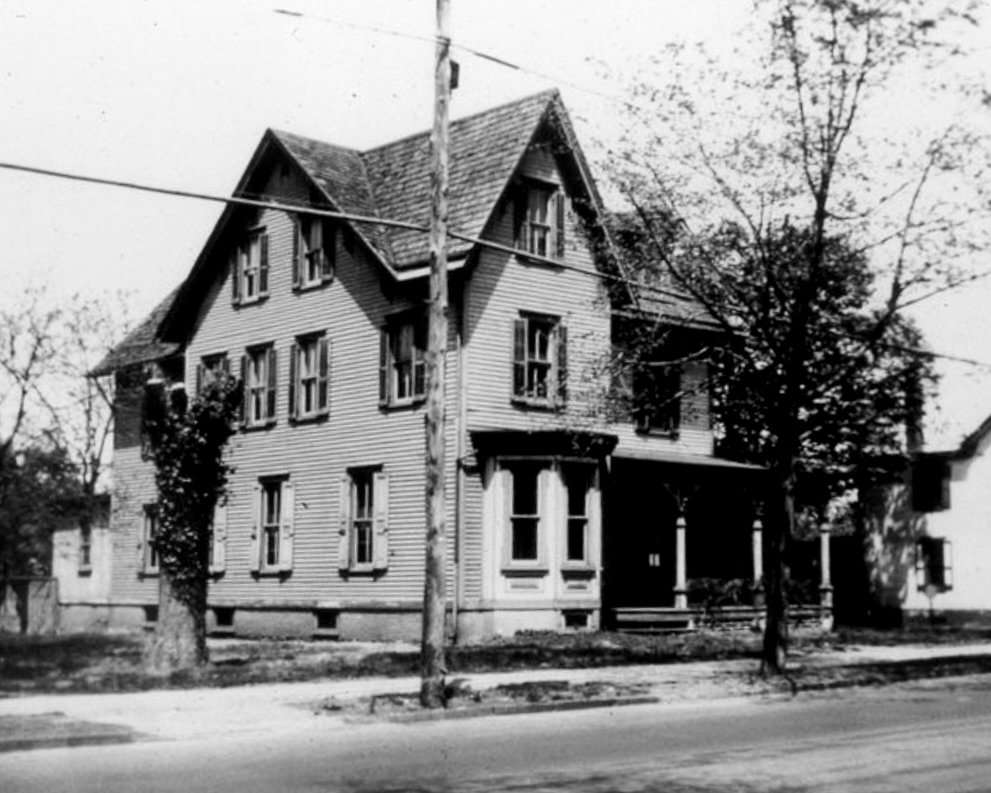In the early 1720s, Thomas Moore, this town’s namesake, first innkeeper and tavern owner moved to this quaint village from Salem County. At the time, the western part of Moorestown was called Rodmantown. In 1732 he bought up a large 33-acre tract of land on the north side of Main Street from just west of the Friends’ cemetery to Locust Street and bounded by what is now Second Street on the north for the sum of forty-nine pounds. As the town’s first major real estate agent, he sold most of the lots, but he set up his home and inn near the corner of Union and Main Streets. By 1745 he had applied to the state for a liquor license which was in use until at least 1760 when Moore died.
It was a small establishment by modern standards. According to James Purdy in Moorestown Old and New,
“…His ‘hotel’ consisted of just four rooms, all told. Two were on the ground floor, and two were upstairs under the roof. These latter were so unambitious that a man could stand in the middle of either of them and touch the peak of the roof with his finger tips; from which it may be inferred that no very massive furniture was at the disposal of Mr. Moore’s guests. The manner of getting up stairs, too, was somewhat different from going up in a modern elevator. The stairway was open at the back, like ordinary cellar stairs, and led up to a trap door in the floor of one of the upper rooms. At the foot the stairway was unattached, but at the top it was fastened to the beam by a pair of hinges. In the day-time, when people were not supposed to have any use for their bedrooms, the stairs were swung up against the ceiling and fastened there by an iron hook, so that they were quite out of the way. As bedtime approached, the hook was displaced and the stairs made available.”
Uriah Borton’s home at the corner of Main Street and Union Avenue, c. 1900.
In the 1890’s, the old tavern building had fallen into disrepair. It was torn down by surveyor Uriah Borton so that he could build a new home on the site. This house was later demolished in the 1930s for the installation of a gas station, which eventually became the home of Cornerstone Bank. Recently The Bank of Cornerstone Bank was converted to The Bank of Princeton.


